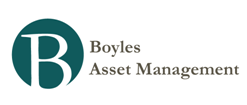Hussman Weekly Market Comment: Anatomy of a Bubble
Presently, the Shiller P/E stands at 24. Be careful how you interpret the data in the table for Shiller P/E's above 24, since these levels were almost never observed in data prior to the late-1990's market bubble. You can see the odd effect of the bubble on the P/E categories above 20. The recent tendency for high valuations to move even higher over the short-term, coupled with the rapid recovery of much of the 2008-2009 loss, creates a "hump" in the 5-year profile - average returns first decline as valuations increase, and then actually improve for the 20-24 bracket. This is an artifact of recent years, and appears neither in pre-1995 data nor in 10-year return data.
Indeed, outside of the bubble period since the late 1990's, the only historical instance of Shiller P/Es materially above 24 was between August and early-October of 1929. The closest we got to 24 in post-war data was in mid-1965. While prices went on to achieve moderately higher levels (lagging earnings growth, so that the Shiller multiple fell), the mid-1965 valuation peak is widely viewed as the starting point for a 17-year "secular" bear market during which the S&P 500 achieved total returns of less than 5% annually through 1982, despite severe inflation. That's a good reminder that stocks are not a very good inflation hedge during periods when inflation is rising, particularly when stock valuations are already elevated and are priced to achieve poor returns. Stocks only "benefit" from inflation during hyperinflations and during sustained and anticipated inflations. In other cases, the eventual adjustments in economic activity and valuations overwhelm the "beneficial" effect of inflation on earnings.
The implication of this data for long-term returns is clear. With the Shiller P/E presently at 24, we observe about the same implications for 10-year S&P 500 total returns as we obtain from our broader valuation methods (expected total returns averaging about 3.5% annually). Still, the actual course of total returns will depend on whether valuations become even more extended over the next 5-10 years, or if they contract instead. Even if one includes data from the late-1990's bubble, the probability of rising P/E multiples from these levels is less than 1-in-5.
Still, if one wishes to bet on a bubble, there is no reason set in stone that the market cannot achieve further gains. The question investors should ask, however, is whether confident prospects for a radiant economic future are likely to capture the imaginations of investors to anywhere near the extent that we observed during the late 1990's. The answer matters, because if we exclude the bubble period, the historical probability of rising P/E multiples from present levels effectively drops to zero - similar valuations were always followed by a contraction in multiples.
- Hussman Weekly Market Comment: Short Horizon, Long Horizon
Over history, and including the past decade, properly normalized valuations have remained a powerful guidepost for full-cycle and long-term returns, particularly on the horizon of 7-10 years. On that front, the current price/revenue multiple of the S&P...
- Hussman Weekly Market Comment: Sitting Ducks
The present market context is this: from a valuation standpoint, virtually every reliable measure of market valuation we observe is now within the highest 1% of historical observations prior to the late-1990’s bubble. “Reliable” in this context...
- Hussman Weekly Market Comment: The Siren's Song Of The Unfinished Half-cycle
Given the extent and maturity of the recent advance, it’s very odd that analysts are now beginning to toss around the idea that stocks have entered a secular bull market. These notions are based not on the level of valuation, nor on the duration of...
- Hussman Weekly Market Comment: Overlooking Overvaluation
Presently, on the basis of smooth fundamentals such as revenues, book values, dividends and cyclically-adjusted earnings, the S&P 500 is somewhere between 40-70% above pre-bubble valuation norms, depending on the measure. That’s about the same point...
- Hussman Weekly Market Comment: Rich Valuations And Poor Market Returns
Last week, the S&P 500 Index ascended to a Shiller P/E in excess of 24 (this "cyclically-adjusted P/E" or CAPE represents the ratio of the S&P 500 to 10-year average earnings, adjusted for inflation). Prior to the mid-1990's market bubble,...

